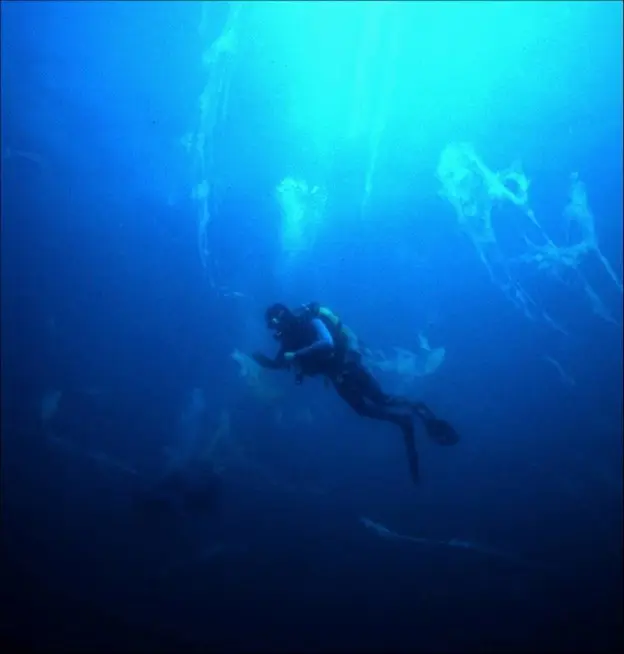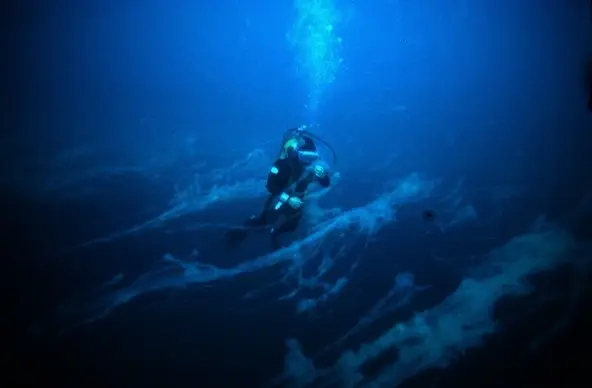Together, we could remove up to 20% of the world’s annual CO2 emissions.
Marinix Ocean Tech is pioneering the future of carbon dioxide removal
Introducing MARINIX Ocean Tech Marine Snow project and the underlying idea how to contribute to stop Global Warming
We completed and tested the system of verification of collected carbon
Publishing a manuscript on the equipment we are developing for our project

Precise measurement of the amount of CO2 that can be removed with our method
Selling carbon credits based on CO2 removed from the atmosphere

We’re confident in our project’s success because it harmonizes revolutionary research, state-of-the-art technology, and securing our planet’s ecological future.
Hanne M. Edvardsen Jelavic
CEO
We must act when we can. We need to work together with nature and not against it.


Marine snow is formed in the ocean
Prof. Stasa Puskaric witnessed the formation of marine snow (photo) while diving in clear waters of the northern Adriatic Sea, off the coast of Pula, Croatia, in June 1997. He has studied the processes associated with marine snow formation extensively since then.

“Marine snow” refers to marine organic aggregations, its name given by divers because they look a little bit like white fluffy bits. These ubiquitous naturally occurring organic particles are present in all the seas and oceans around the globe. It was originally described as ocean garbage, but these particles are much more than that. They are separate entities, we could call them ecosystems, and very much alive. We found two groups of organisms actively residing and living within the matrix of marine snow: cyanobacteria and heterotrophic bacteria.
CO2 sinks to the ocean bottom

The “snowflakes” grow over time because of sticky nature of marine snow organic matter matrix, some reaching several meters in length. Some flakes fall for weeks before finally reaching the ocean floor. Continuous showers of marine snow provide food for many deep-sea creatures. Many animals in the dark parts of the ocean filter marine snow from the water or scavenge it from the seabed. This is not a simple process; it involves aggregation of dissolved organic matter originating from phytoplankton in the ocean, but sometimes also from riverine inputs of dissolved organic matter if closer to river deltas. Then it is the activity of marine snow “residents”, cyanobacteria and heterotrophic bacteria which remove CO2 (to be precise the bicarbonate form) from the ambient water converting it to organic matter. Marine snow matrix stores and concentrates this newly produced organic matter, and when the particles become too heavy (no longer being able to maintain buoyancy in the surface layer in the ocean) they will sink down in the ocean depths with various sinking speeds. Thus removing carbon from the surface down into geologic reservoirs, never to come back.
Global warming effects are reversed
This process is the only natural system powerful enough to reverse the current trends of global warming.
If the conditions observed in the Adriatic in 1997 could be replicated in an area of 100.000 m2 in the Southern oceans, it could remove up to 1 billion tons of carbon during a 4-month period.
Despite the known importance of Marine snow’s ability to remove “new” carbon from the ocean surface, and its strong bonds to microbial extracellular release and dissolved organic matter pool, Marine snow has never been studied in the Southern oceans. Further research is necessary, and we aim to gather an international research consortium to continue the process.
Triggering the Marine Snow
Minimally increasing the amount of iron chelates in the ocean triggers the formation of Marine Snow.
Removing CO2 from the atmosphere
Carbon dioxide from the atmosphere is removed by communities living in marine snow matrix: cyanobacteria and heterotrophic bacteria.
Marine snow sinks to the ocean floor
Marine snow “snowflakes” grow over time because of the sticky nature of marine snow organic matter matrix, some reaching several meters in length. As more and more carbon is concentrated in marine snow, these particles sink down to the ocean floor. Thus, removing carbon from the surface down into geologic reservoirs.
Accelerate Carbon Removal